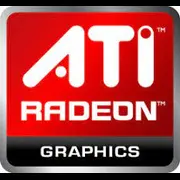ATI Radeon HD 5870

ATI Radeon HD 5870: A Legend of the Past in the Age of Modern Technologies
(April 2025)
Introduction
The ATI Radeon HD 5870 is a graphics card that revolutionized the gaming industry in 2009. Despite its age, it remains a subject of interest for enthusiasts and collectors alike. In this article, we will explore its features, performance, and relevance in 2025.
1. Architecture and Key Features
Architecture: The HD 5870 is built on the TeraScale 2 microarchitecture, debuting with support for DirectX 11. This enabled the card to utilize tessellation and improved graphics in games of that era.
Manufacturing Process: A groundbreaking 40nm production technology for 2009. The Cypress XT chip included 2.15 billion transistors, providing high computational density.
Unique Features:
- Eyefinity — support for up to 6 monitors to create large display arrays.
- ATI Stream — technology for accelerating parallel computations (a precursor to OpenCL).
- DirectX 11 and Shader Model 5.0 — key APIs for games of the late 2000s.
Modern equivalents: Technologies like FidelityFX, RTX, or DLSS are not available for the HD 5870. It is purely a rasterization card without hardware ray tracing or AI acceleration.
2. Memory
Type and Size: 1 GB of GDDR5 with a 256-bit bus — standard for top solutions of 2009.
Bandwidth:
- Effective memory clock: 4800 MHz.
- Bandwidth: 153.6 GB/s (calculated as: 4800 MHz × 256 bits / 8).
Impact on Performance: In 2009–2012, this was sufficient for gaming at 1080p. However, by 2025, even 2 GB of video memory is the minimal threshold for modern projects, rendering the HD 5870 unsuitable for new titles.
3. Gaming Performance
Retro Games (2009–2013):
- Crysis (2007): ~35 FPS at high settings in 1080p.
- Battlefield 3 (2011): 40-45 FPS at 1080p (Medium).
Modern Titles (2020–2025):
- Cyberpunk 2077: less than 15 FPS at low settings in 720p.
- Apex Legends: 20-25 FPS in 720p (Low).
Resolutions:
- 1080p: Only for older games.
- 1440p/4K: Impractical due to insufficient memory and computational power.
Ray Tracing: Absent. Modern games utilizing RTX/DXR will not run on the HD 5870.
4. Professional Tasks
Video Editing and 3D Modeling:
- Basic work in Adobe Premiere Pro or Blender is possible, but rendering will take 5-10 times longer than on modern GPUs.
- Limited support for OpenCL 1.0, with CUDA not available.
Scientific Calculations:
- Due to the outdated architecture and lack of optimization for modern libraries (TensorFlow, PyTorch), the card is practically useless.
Conclusion: The HD 5870 is only suitable for retro projects or for learning the basics of 3D graphics.
5. Power Consumption and Heat Output
TDP: 188 W — a high figure even by 2025 standards.
Cooling: Turbine-style system with a single fan. Noise level reaches up to 45 dB under load.
Recommendations:
- A case with good ventilation (at least 2 fans for intake/exhaust).
- Replacement of thermal paste is essential for used units.
6. Comparison with Competitors
Historical Competitors (2009–2010):
- NVIDIA GeForce GTX 480: More powerful in DirectX 11, but with a TDP of 250 W and high heat output.
- AMD Radeon HD 5970: A dual-chip version with 2 GB of memory, but a rarity in 2025.
Modern Equivalents (2025):
- NVIDIA RTX 3050: Ten times more performance, supporting DLSS 3.5 and RTX.
- AMD Radeon RX 7600: Energy-efficient, with 8 GB of GDDR6 and FSR 3.0.
The HD 5870 falls short even against budget models in 2025 but offers a competitive price in the second-hand market ($20–50 compared to $200–300 for new GPUs).
7. Practical Tips
Power Supply: Minimum of 500 W with 2×6-pin PCIe connectors.
Compatibility:
- Requires a motherboard with PCIe 2.0 (compatible with PCIe 3.0/4.0, but with bandwidth limitations).
- Drivers: Official support ended in 2015. For Windows 10/11, use modified community drivers.
OS: Best stability on Windows 7/8.1. On Linux, support is available through open-source drivers (radeon).
8. Pros and Cons
Pros:
- Historical significance and cult status.
- Eyefinity support for multi-monitor setups.
- Low price in the second-hand market.
Cons:
- Does not support DirectX 12 Ultimate, Vulkan 1.3.
- Limited memory (1 GB).
- High power consumption.
9. Final Conclusion: Who is the HD 5870 For?
- Collectors and Enthusiasts: For retro builds or restoration of a 2000s PC.
- Low-Budget Projects: If a card is needed for office tasks or older games.
- Educational Purposes: Studying GPU history or the basics of OpenCL.
Why Not for Everyone? The HD 5870 is a relic of an era and not a tool for modern needs. In 2025, it should be regarded only as a part of history, not a primary graphics card.
Conclusion
The ATI Radeon HD 5870 is a symbol of a technological breakthrough for its time. Today, it reminds us of the rapid evolution of the industry. If you're looking to dive into nostalgia or build a retro PC, this card is worth considering. But for gaming and work in 2025, opt for modern solutions.
Basic
Memory Specifications
Theoretical Performance
Miscellaneous
Benchmarks
Compared to Other GPU
Share in social media
Or Link To Us
<a href="https://cputronic.com/index.php/gpu/ati-radeon-hd-5870" target="_blank">ATI Radeon HD 5870</a>